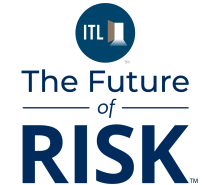What does it take today to stand out in today's crowded property and casualty insurance landscape? The property and casualty (P&C) insurance landscape is always changing, and rarely do you find a time such as now where changes are happening more rapidly than ever. Recent industry data suggests that global insurance premiums are expected to continue to increase over the next five years. This trend is driven by increasingly severe weather events, economic uncertainty and inflation, creating pressures that brokers must navigate, with clients looking for brokers not only to secure policies but also to provide consultative support in managing risk.
With these dynamics in play, brokers have an opportunity to stand out by taking on a more modern, strategic advisory role — offering solutions that extend beyond traditional carriers.
Let's look at the challenges P&C brokers encounter, the broad solutions available and how they can meet client needs by building long-term, resilient partnerships.
Managing Volatile Premiums in Hard Markets
In hard markets, clients often face significant premium increases and limited capacity, making it challenging to maintain affordable coverage. In fact, in 2023, the average commercial property insurance premium rose by over 20%, and some sectors — like real estate and manufacturing — saw even sharper spikes. Rising premiums coupled with restricted options can strain clients' budgets, requiring brokers to find alternative ways to stabilize costs. Chasing rates, increasing deductibles and reducing total insured value should not be the only options.
One solution is structured and customized insurance programs, which can help level out premiums over time and smooth the impact of market cycles. Brokers might also suggest exploring alternative risk retention strategies that allow clients to focus on specific, essential coverages tailored to their unique needs. These targeted approaches allow clients to stabilize costs without sacrificing coverage, fostering trust and demonstrating the broker's commitment to client needs and reducing attrition.
See also: Does the P&C Insurance Cycle No Longer Exist?
Meeting Demand for Specialized or Hard-to-Find Coverage
With emerging risks and niche markets on the rise, brokers are increasingly tasked with finding customized coverage solutions. According to a recent survey, 70% of executives report that they need more specialized insurance to address the unique risks of their industry, particularly in areas like cybersecurity, construction and health care.
To meet this growing need, brokers can help clients implement self-insured retention (SIR) programs, where businesses set aside funds for certain types of predictable losses while insuring more catastrophic risks in the traditional market. For industries facing complex or niche risks, bundling multiple specialized coverages into one policy can simplify protection while addressing specific exposures. These solutions allow clients to manage unique risks, helping brokers address specialized demands and enhance client satisfaction.
Improving Client Control Over Claims Management
Claims management can significantly affect the client experience, and a lack of transparency or delayed handling can cause friction. A report from Accenture highlights that dissatisfaction with claims handling can drive policyholders to switch providers, with around 74% of dissatisfied customers indicating they either changed providers or are considering it. For brokers, guiding clients toward more transparent and efficient claims management is essential in maintaining strong relationships.
Brokers can advocate for using third-party administrators (TPAs) that offer more tailored, efficient claims management services. TPAs give clients greater visibility and control over the claims process, creating a more proactive and aligned experience. Furthermore, brokers can encourage clients to implement safety and risk management programs, which can reduce claims frequency and improve outcomes. By helping clients take control of their claims, brokers position themselves as essential advocates in achieving smoother claims handling and better client experiences.
Enhancing Client Risk Management Practices
Effective risk management is not only a strategic priority for clients — it directly affects their insurance costs, claims experience and overall profitability. For example, industries with significant physical risks, like construction and manufacturing, can see substantial benefits from implementing comprehensive safety programs. According to the U.S. Bureau of Labor Statistics, businesses with strong safety programs can significantly reduce workplace injuries, which leads to fewer workers' compensation and liability claims. Over time, this can improve clients' claims histories and lead to more favorable premium rates.
By guiding clients to adopt robust risk management strategies, such as safety training and real-time monitoring technology, brokers help stabilize clients' insurance costs, making them less vulnerable to market fluctuations and claims-driven premium hikes.
Innovative Risk Financing Options: Adding Captive Insurance to the Toolkit
For clients who face unique or complex risks, alternative risk financing options such as captive insurance can offer significant advantages. While not suitable for every client, captives allow businesses to retain and manage risk more effectively, with benefits such as greater premium stability and customized coverage. According to industry data, nearly every Fortune 500 company now uses captive insurance for some portion of their risk management program, with captive formations growing among small and midsize businesses, underscoring its value in stabilizing volatile premiums and addressing niche risks.
A captive can be particularly beneficial for businesses with frequent, high-volume claims or those seeking customized coverage outside traditional markets. For example, a construction firm dealing with regular but predictable liability claims might use a captive to manage these costs more efficiently, while still maintaining traditional coverage for catastrophic events. Brokers who offer captives as one of several advanced risk financing strategies provide clients with greater control and flexibility.
See also: P&C Trends Point to Transformative 2025
Building a Strategic, Long-Term Partnership with Clients
Success in the evolving insurance landscape requires brokers to go beyond one-off policy placements and build enduring relationships with clients. By acting as strategic advisers, brokers can help clients not only manage immediate risks but also achieve long-term stability. Clients who view their brokers as invested partners are more likely to remain engaged and receptive to future recommendations.
In this regard, captives are one of many solutions brokers can suggest as part of a comprehensive, client-centered approach. By emphasizing risk management practices, transparent claims handling and strategic solutions tailored to individual needs, brokers foster trust and loyalty — key components of lasting partnerships.
Future-Proofing With a Diverse Set of Solutions
The challenges and opportunities in the P&C industry continue to grow, and brokers who build a versatile, innovative toolkit will be best positioned to meet evolving client needs. From structured programs and TPAs to specialized coverages and captives, today's brokers have a wide array of strategies at their disposal. By focusing on education, strategic advising and client-specific solutions, brokers can build resilient relationships, creating value and positioning themselves as trusted advisers for the long term.
In a market where client demands and risks are constantly shifting, brokers who prioritize a consultative approach and embrace diverse, customized solutions will be the ones who lead — helping their clients navigate the future of risk with confidence.






